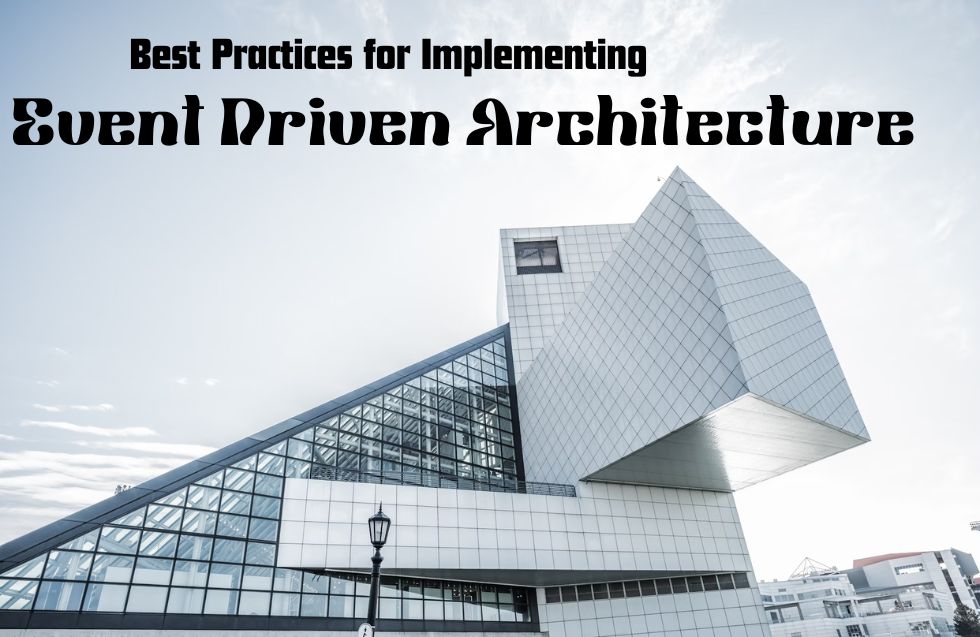Enterprises today must find effective solutions to handle complex data interactions efficiently and reliably, and one paradigm that is rapidly gaining traction is Event Driven Architecture (EDA). In contrast to traditional architectures that rely on linear processes, EDA offers a dynamic framework allowing real-time processing and responsiveness to external events. This is an invaluable benefit for developers, IT architects, and tech enthusiasts working in multimillion-dollar enterprises. Understanding and integrating EDA can be game-changing. This blog post discusses best practices for incorporating EDA into enterprise systems, providing insights and practical tips along the way.
Understanding Event Driven Architecture
Event Driven Architecture (EDA) is a system design pattern in which events trigger actions or workflows, such as customer purchases or sensor readings, that require immediate system responses. EDA stands out from traditional batch processing by responding in real-time to every event. This approach proves especially valuable when handling massive volumes of data and requires quick action to take place immediately. This approach is particularly suitable for enterprises dealing with significant quantities of information requiring prompt action to take place immediately.
Tech enthusiasts and IT architects alike will find EDA an enticing opportunity to rethink system interactions through event-driven architecture (EDA). Developers can leverage events as the cornerstones for more flexible and scalable architecture, decoupling services to enable independent operation while remaining cohesive through event communication.
EDA appeals to enterprises for its ability to streamline operations and enhance data flow within an organization, providing enhanced customer experiences, optimizing operational efficiencies and faster innovation cycles. However, its implementation requires careful consideration as it requires changes to both systems and processes within an enterprise.
Key Benefits of Event Driven Architecture
EDA presents many benefits for enterprises dealing with large-scale operations and data, especially those dealing with vast volumes. One such advantage is increased system responsiveness. By processing events in real time, businesses can quickly respond to changes in customer behavior, market conditions, or operational requirements. This is an essential trait in today’s fast-moving digital economy.
Event driven systems offer another key benefit. Namely, improved scalability. Event-driven architecture can easily adapt to different workloads, making it perfect for enterprises experiencing growth or fluctuating demand. Decoupled services enable EDA components to scale independently under heavy loads for maximum performance under stress. Such scalability is crucial when handling millions of transactions or data points daily.
EDA promotes efficient resource utilization. Enterprises can react immediately to events as they arise and allocate their resources dynamically. This maximizes operational efficiency while cutting costs. EDA’s effectiveness is particularly valued among large organizations with complex infrastructures where managing their resources can significantly affect overall performance and profitability.
Best Practices for EDA
Implementing Enterprise Decision Analysis in an enterprise setting requires taking a strategic approach in order to ensure its successful integration and operation. One essential best practice for EDA implementation in any environment is accurately grasping business goals and requirements. This helps establish events and processes that drive the system to align it with organizational objectives.
Data modeling is an integral element of EDA implementation. A detailed data model allows enterprises to capture and organize all events that impact their operations effectively, from all sources and interactions, providing a holistic picture of its event landscape. Accurate modeling ensures all components of architecture work harmoniously to form a coherent and efficient system.
Selecting the proper tools and technologies is also vital in EDA implementation, such as event brokers, streaming platforms and data storage solutions. Businesses should evaluate potential tools based on criteria like their scalability, reliability and compatibility with existing systems to ensure they will support the intended architecture.
Design for Scalability and Adaptability
Scalability and flexibility are central elements in EDA design for heavy-duty enterprises, especially large ones. To meet these standards, developers should adopt a modular approach by breaking down their system into manageable components or microservices designed to handle specific events independently. Using event driven architecture microservices can make a big difference when it comes to processing data effectively.
Event Sourcing (ES) is another technique designed to enhance scalability and flexibility. By recording events in a log, enterprises can recreate the state of their system at any point in time for easy recovery and modification, providing robust data management as well as providing a basis for future enhancements or expansions.
Leveraging cloud technologies can further expand the scalability and flexibility of EDA implementations. Cloud platforms offer on-demand resources and services, allowing enterprises to scale their infrastructure according to real-time needs. This advantage is especially valuable for organizations with global operations or variable workloads.
Data Integrity and Consistency
EDA presents enterprises with the essential challenge of maintaining data integrity and consistency across a decentralized environment. To address this, enterprises must implement reliable event validation and error detection mechanisms such as schema validation or message brokers with built-in error handling, helping ensure data remains accurate and reliable.
Eventual consistency is another concept enterprises should keep in mind when implementing EDA. While transactional systems focus on immediate consistency, EDA often operates under the assumption that data will become consistent over time. By designing systems to manage eventual consistency gracefully, enterprises can keep reliable information while reaping all EDA’s benefits.
Monitoring and auditing are also integral parts of maintaining data integrity. Implementing comprehensive logging and tracking mechanisms enables enterprises to gain visibility into event flows, identify anomalies or discrepancies quickly, maintain trust within their system, and comply with regulatory requirements more easily.
AI and Machine Learning in EDA
Integrating artificial intelligence (AI) and machine learning (ML) with EDA can open up new avenues for innovation and optimization. AI algorithms can analyze event data in real-time to provide insights into customer behavior, operational efficiency, market trends, and strategic initiatives and drive decisions, ultimately elevating EDA’s value.
Developers and IT architects see AI integration into EDA as an exciting opportunity to create intelligent systems that learn over time. Training models on past event data enables enterprises to develop predictive analytics that predict future trends and behaviors, providing businesses with an invaluable way to remain ahead of the competition and exploit emerging opportunities.
Enterprises seeking to implement AI and machine learning successfully must ensure their EDA infrastructure meets all data processing and storage requirements, whether upgrading existing systems or investing in new technologies such as distributed computing frameworks or data lakes.
Overcoming Common Challenges in EDA
Although EDA implementation can bring great rewards, some difficulties can be associated with its implementation. One such challenge lies in managing distributed system complexity. Enterprises should invest in reliable monitoring and management tools to ensure all components of their architecture operate seamlessly and together, as these provide visibility into event flows that allow teams to identify issues before they impact operations.
Another challenge lies in maintaining security and compliance. Given the sensitive nature of event data, enterprises must implement stringent security measures to guard against unintended access or breaches, including encryption both at rest and transit, access control implementation, and regular audits.
Change management is also an essential component of EDA implementation. Moving to a new architecture may be disruptive, so enterprises must involve all stakeholders and provide sufficient training and support in order to facilitate its successful migration to EDA.
Measuring Success and ROI in EDA
Enterprises seeking to demonstrate the value of EDA must establish specific metrics of success and return on investment (ROI). Such metrics may include improvements in system responsiveness, reductions in operational costs, or an increase in customer satisfaction. Tracking these indicators allows businesses to assess EDA’s effect and justify continued investments.
Regular performance assessments are key for realizing the full benefits of EDA. By conducting regular reviews of system performance and event flows, enterprises can identify areas for improvement and make changes necessary to keep the architecture optimized and aligned with business goals. Such assessments ensure EDA remains optimized and maximizes benefits to organizations.
Enterprises should also note the qualitative benefits of EDA, such as enhanced innovation or employee satisfaction improvements. While these can be more difficult to measure quantitatively, they provide important insight into their broader effect on an organization.












